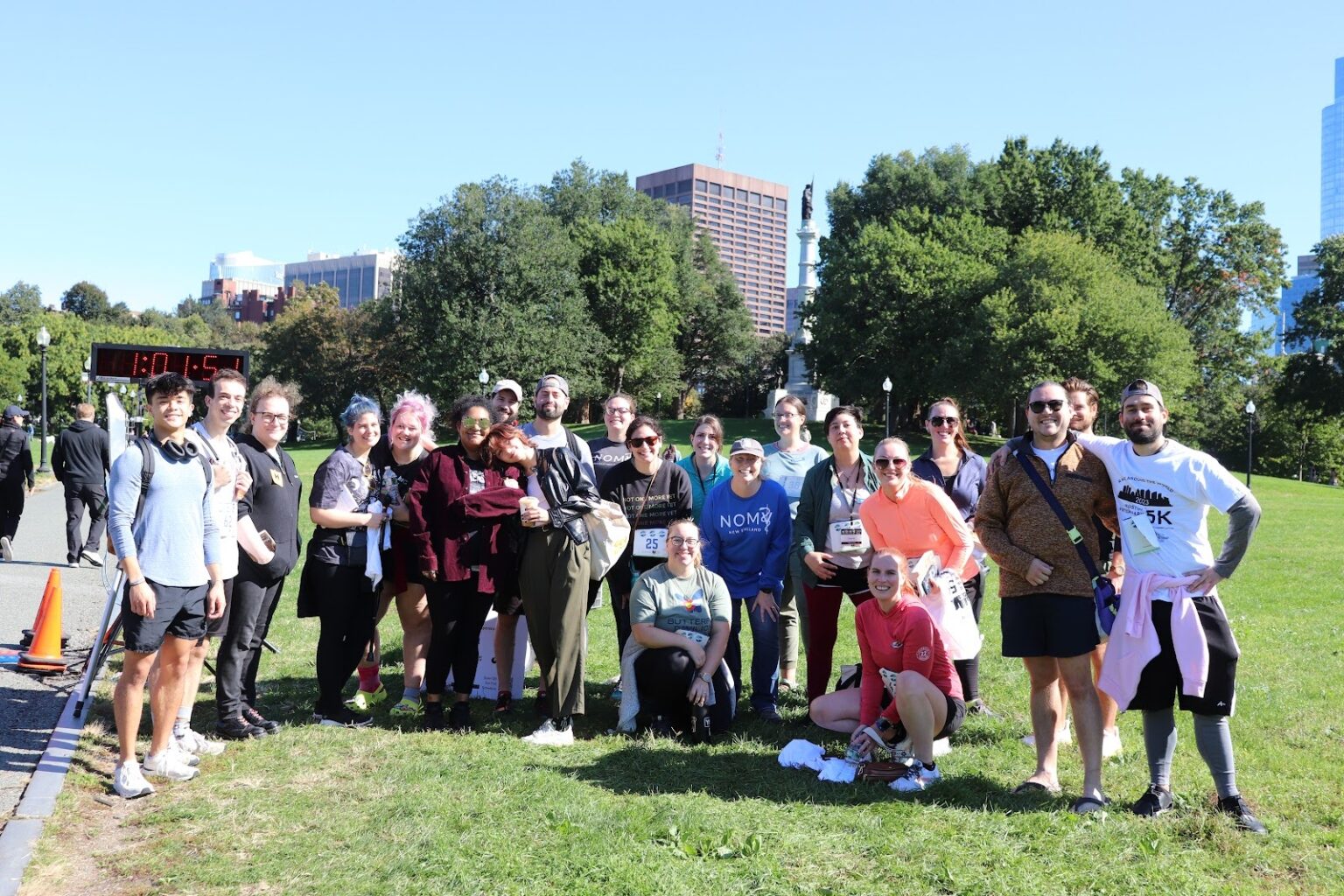Exploring a Few Benefits of Employer-Sponsored Volunteerism in Veterinary Workplaces
By: Danny Rosenmund, Director of Outreach
Join NOMV in celebrating volunteerism! As a charitable non-profit, we are tremendously grateful and appreciative for all of the individuals that choose to donate their time, energy, and passion in pursuit of our mission. Scholarship has described positive correlations between volunteering and personal well-being. In fact, we believe so strongly in the well-being benefits of volunteering that we encourage organizations to explore participating in our CLEAR Blueprint Practice Certification program to find opportunities for their staff to engage with the community as volunteers. Let’s dig into ways employer-sponsored volunteerism can promote well-being in your workplace.

Employer-sponsored volunteerism describes a variety of activities where the staff of one organization donate some of their time and labor to support the mission of a charitable initiative. There is a wide range of opportunities for this type of volunteering, considering the many roles that non-profits and NGO’s play. These interactions between employers and volunteer engagements provide numerous opportunities for positive well-being outcomes.
Employee Volunteering Can Help Prevent Burnout
For the individual, the benefits of volunteering can be significant. One study examined how volunteers felt before and after helping other organizations. Researchers found a “positive and significant” association between volunteering and feeling more satisfied with one’s life. Further, individuals that volunteered at least monthly reported improvements in mental health. The authors of that study compared the well-being benefits of volunteerism as akin to living in a more well-resourced community.
Individuals that volunteer through employer-sponsored opportunities can also benefit from aligning their personal and professional identities. Burn-out is a workplace hazard, defined as a result of unmanaged occupational stress. When employers create and support opportunities for staff to volunteer working hours towards a personally meaningful mission, they report feeling more connected to their paid work, peers, and self. Conversely, that same study found volunteering when already burnt-out often exacerbated those feelings.
Tips and Tricks for Successful Employee Volunteering Efforts
Getting motivated to volunteer is typically the easy part – people who volunteer often share traits found commonly among veterinary professionals. It can be much more challenging to identify, create, and support a volunteering opportunity. Below are some tips to help develop and implement a sustainable employer-sponsored volunteering effort:
- Be intentional with support – when electing to engage in employer-sponsored volunteerism, it is critical to have complete organizational buy-in. Teams may identify community service as a value. However, if staff and supervisors are not provided the time and opportunities to activate those values, the initiative will lose momentum and the team may miss out on the potential benefits
- Plan ahead to ensure impact – the ability to see the results of work is incredibly important for volunteers when deciding how to donate their time. Have a strategy in place that looks to identify and navigate potential barriers for staff to participate. Identify and connect with potential partners to maximize the benefits for your organization and the recipients
- Document and debrief your efforts – exposure to secondary trauma, physical exhaustion, and unmanaged stress are all occupational hazards in veterinary medicine that contribute to burn-out. One of the best ways we can promote emotional resilience is by accumulating positive experiences and memories to refer back to when stressed
Some great ways that veterinary professionals can volunteer
-
- Donate professional skills – this is one of the most popular ways for veterinary teams to volunteer, and there’s good reasons for that! You’re highly skilled, in-demand, and there are tangible inequities in access to care for some communities. Some teams host high-volume vaccine clinics, offer free/reduced sterilization services, and others have subsidized care for classroom pets
- Host a supply drive – collecting supplies for a specific cause is a great opportunity to promote team-work, altruism, and inform your stakeholders about missions that are meaningful to the team. Supply drives can be low-investment but high-return, and are a great way to invite clients and guests to join the effort!
- Support a cause you care about – creating and sustaining the energy to volunteer regularly depends on personal motivation. It’s just easier to get excited to do something that aligns with personal values. Sometimes group activities aren’t the best way to promote volunteerism for everyone – give people an opportunity to seek out and learn about different modes of volunteerism that appeal to them.
Employer-sponsored volunteerism is just one way to promote well-being in the veterinary workplace. For more ideas on ways to promote well-being in your veterinary workplace, check out our curated collection of reference materials in the CLEAR Toolkit!
1 .Lawton, R. N., Gramatki, I., Watt, W., & Fujiwara, D. (2021). Does volunteering make us happier, or are happier people more likely to volunteer? Addressing the problem of reverse causality when estimating the wellbeing impacts of volunteering. Journal of Happiness Studies, 22(2), 599–624. https://doi.org/10.1007/s10902-020-00242-8
2. Pfeffer, J., Singer, S., & Stepanek, M. (2022). Volunteering improves employee health and organizational outcomes through bonding with coworkers and enhanced identification with employers. Journal of Occupational & Environmental Medicine, 64(5), 370–376. https://doi.org/10.1097/JOM.0000000000002485
3. Lawton, et al., 2021
4. Burn-out an “occupational phenomenon”: International classification of diseases. (2019, May 28). World Health Organization. https://www.who.int/news/item/28-05-2019-burn-out-an-occupational-phenomenon-international-classification-of-diseases
5. Pfeffer, Singer, & Stepanek, 2022
6. Ibid, 2022
7. Strkljevic, I., Tiedemann, A., Souza de Oliveira, J., Haynes, A., & Sherrington, C. (2024). Health professionals’ involvement in volunteering their professional skills: A scoping review. Frontiers in Medicine, 11. https://doi.org/10.3389/fmed.2024.1368661
8. Metzger, T., Nguyen, N., Le, H., Havo, D., Ngo, K., Lee, S., Nguyen, T., Nguyen, Q., Tran, L., Tong, N., Le, C., & Dudovitz, R. (2024). Does volunteering decrease burnout? Healthcare professional and student perspectives on burnout and volunteering. Frontiers in Public Health, 12, 1387494. https://doi.org/10.3389/fpubh.2024.1387494
Recent Posts
About Us
NOMV addresses well-being in the veterinary medical community through evidence driven programming that raises awareness on mental health in the community while providing innovative prevention and intervention programming.
